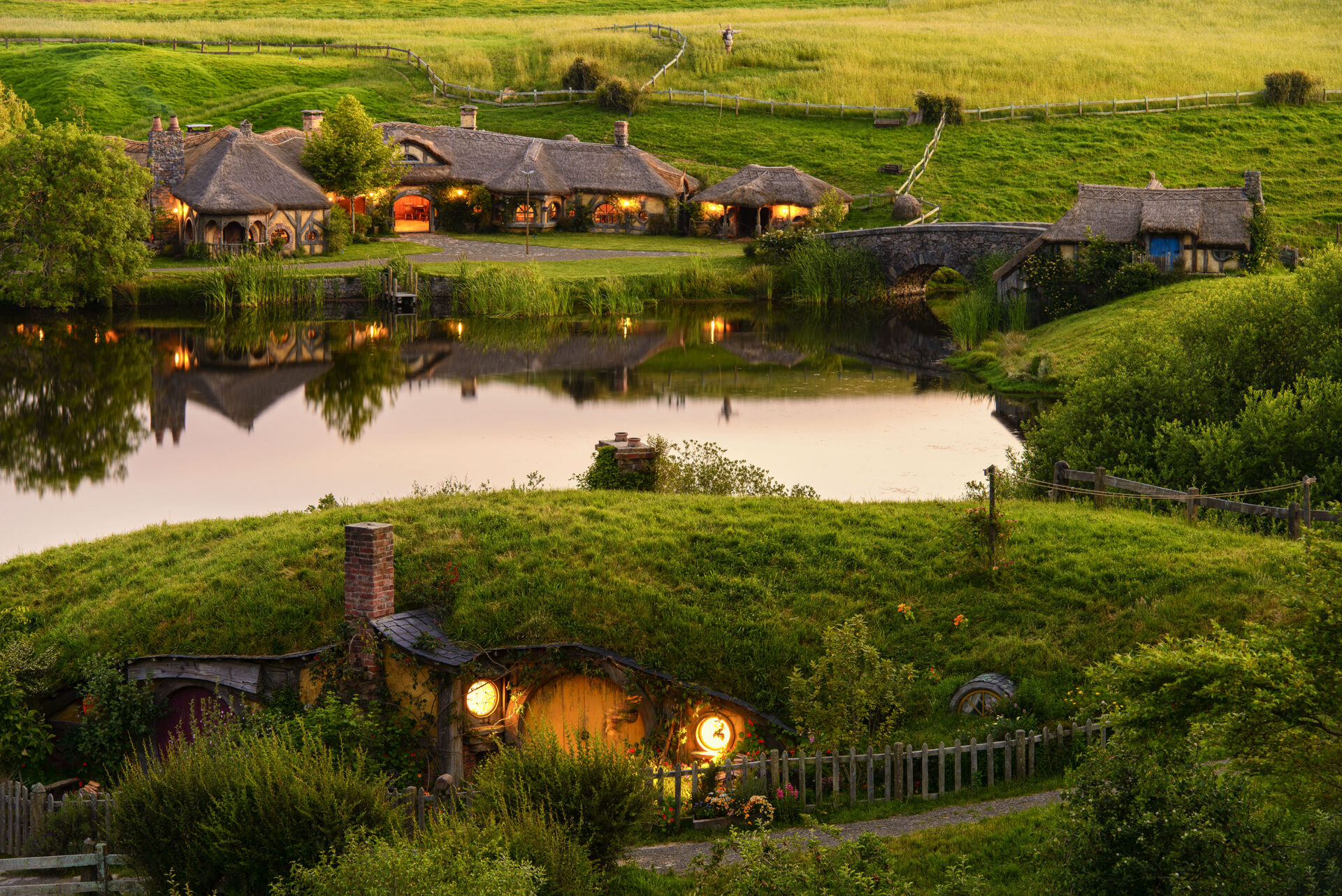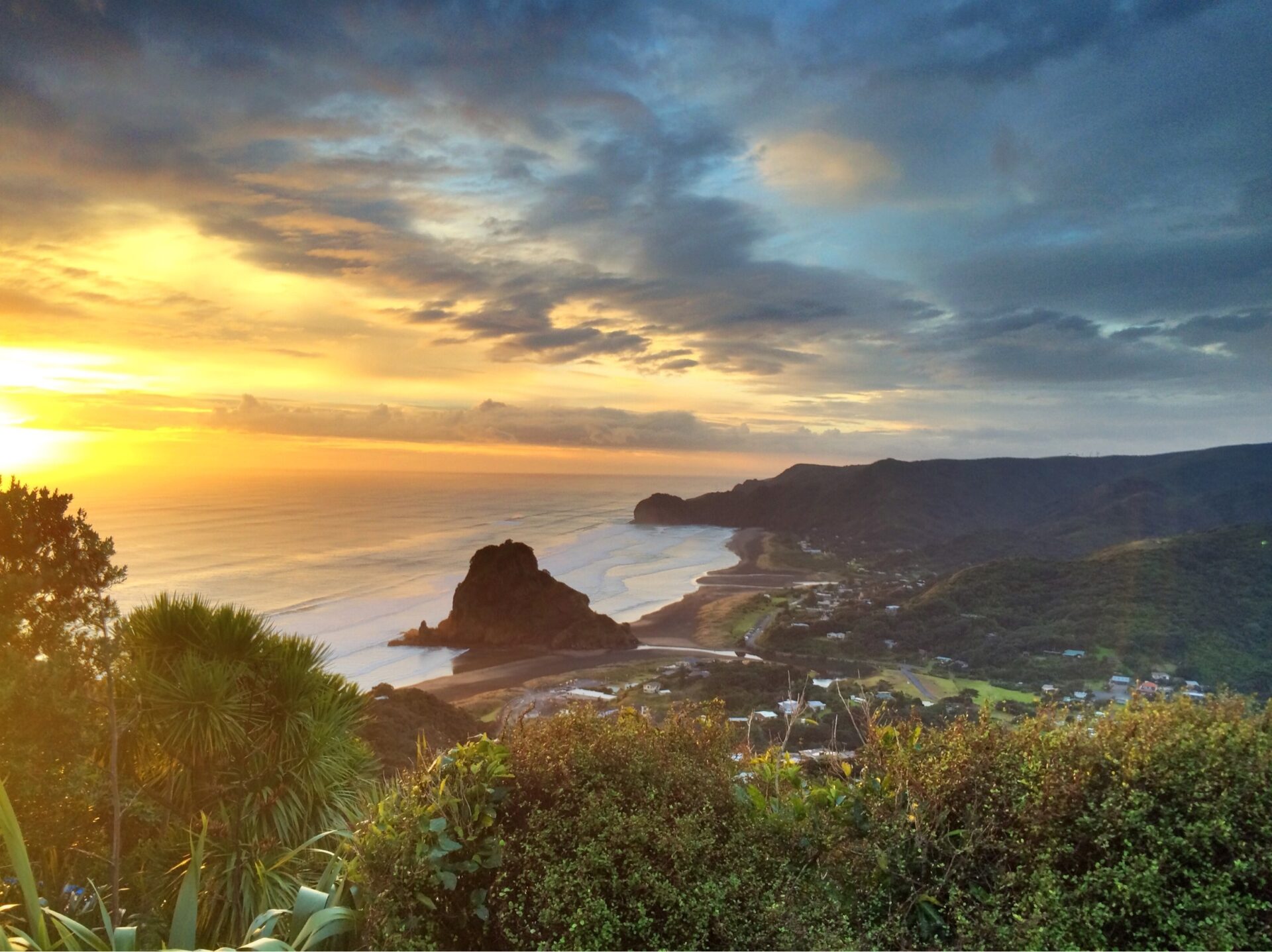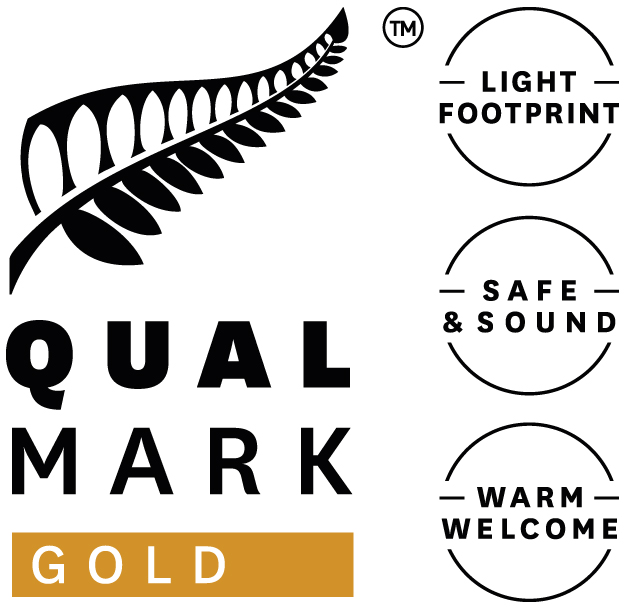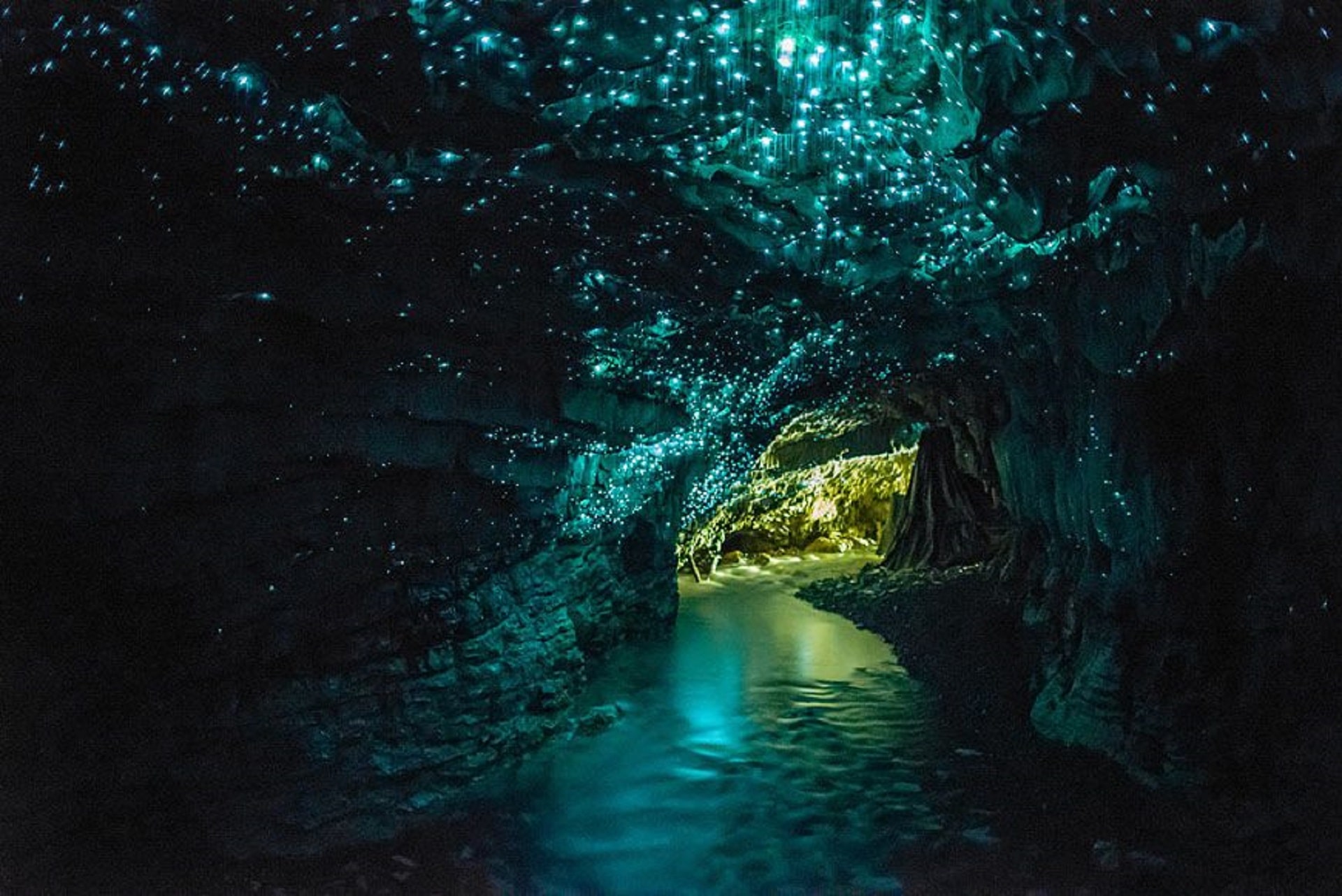
Explore the enchanting legends of Waitomo Caves and the magical world of Hobbiton. Discover travel tips, adventure activities, and cultural experiences in these iconic New Zealand destinations.
Introduction
Waitomo and Hobbiton are two of New Zealand’s most magical places. Waitomo is famous for its glowworm caves, and Hobbiton is the film set from The Lord of the Rings and The Hobbit. This guide explores the legends and wonders of these destinations, offering tips for an unforgettable visit. These two locations are indeed the most visited spots in New Zealand by tourists from all around the world.
Getting to Waitomo and Hobbiton
- Travel: Both destinations are easily reached by car from Auckland, Rotorua, Hamilton or Tauranga. Guided tours, including those offered by Auckland & Beyond Tours, provide luxury transport, comprehensive tours, and accommodations.
- Best Time to Visit: Spring and summer (September to March) for mild weather and outdoor fun. Both destinations are great year-round.
Exploring Waitomo
Waitomo Overview
The name comes from Maori words wai (water) and tomo (hole). Key attractions include Waitomo Glowworm Caves, Aranui Cave, and Ruakuri Cave.
Legends
Maori stories speak of the Taniwha, a mythical creature protecting the caves.
The myth of the Taniwha is a prominent Māori legend, which tells of powerful supernatural beings that dwell in rivers, lakes, and caves. These creatures, often depicted as protectors or guardians, can also become dangerous if disrespected. In the context of the Waitomo Glowworm Caves, the Taniwha are said to have created the cave system, carving out the intricate passages and underground rivers. According to local lore, the Taniwha watched over the caves, ensuring the safety of the area. This myth highlights the deep cultural and spiritual connection the Māori people have with the Waitomo Glowworm Caves, emphasizing themes of respect for nature and the mystical guardianship of the land.
Glowworms
Glowworms in Waitomo are the larvae of the fungus gnat species *Arachnocampa luminosa*, native to New Zealand. These bioluminescent creatures emit a blue-green light to attract prey into their sticky silk threads hanging from cave ceilings. The light is produced through a chemical reaction in the glowworm’s tail, involving an enzyme called luciferase. This natural phenomenon creates a stunning starry sky effect inside the Waitomo Caves, attracting numerous visitors who come to witness the mesmerizing glowworm displays. The unique environment of the Waitomo Caves provides an ideal habitat for these glowworms, allowing them to thrive and create one of New Zealand’s most enchanting natural attractions.
Adventure Activities
Waitomo offers a range of exciting adventure activities that cater to thrill-seekers and nature enthusiasts alike. Some of the popular activities include:
- Black Water Rafting: Navigate through the underground rivers of Waitomo Caves on an inflatable tube. This thrilling activity combines rafting, caving, and floating in the dark, illuminated by the glow of thousands of glowworms.
- Caving and Abseiling: Explore the depths of Waitomo’s caves by abseiling down into deep caverns and squeezing through narrow passageways. The Lost World and the Black Abyss tours are famous for their exhilarating abseiling experiences.
- Cave Tours: Participate in guided walking tours of the caves, such as the Waitomo Glowworm Caves tour, where you can see the stunning glowworm displays and learn about the cave’s geological and cultural history.
- Hiking and Nature Walks: Explore the beautiful Waitomo region on foot. There are several walking trails, such as the Ruakuri Bushwalk, that offer scenic views of the lush landscape and unique rock formations.
- Ziplining: Glide through the forest canopy on a zipline, offering a bird’s-eye view of the Waitomo landscape and an adrenaline-pumping experience.
- Photography Tours: Capture the natural beauty of the Waitomo Caves and surrounding areas with specialized photography tours that provide opportunities for stunning underground and above-ground shots.
These activities provide a mix of adventure, natural beauty, and unique experiences that make Waitomo a must-visit destination for adventure seekers.
Auckland & Beyond Tours can arrange these thrilling activities for a personalized adventure.
Conservation
At Waitomo, various conservation practices are implemented to protect the unique ecosystem of the caves and the surrounding environment. These efforts ensure the sustainability of the natural attractions and preserve them for future generations. Key conservation practices include:
- Glowworm Habitat Protection: Special care is taken to maintain the delicate environment needed for the glowworms to thrive. This includes controlling the amount of light, temperature, and humidity within the caves to mimic natural conditions and minimize human impact.
- Water Quality Monitoring: The quality of the water in the underground rivers is regularly monitored and maintained to ensure it remains free from pollutants that could harm the cave ecosystem. This includes managing runoff and wastewater to prevent contamination.
- Visitor Management: Limits on the number of visitors and guided tour groups are enforced to reduce human impact on the caves. Designated pathways and platforms are used to minimize physical damage to cave formations and delicate ecosystems.
- Education and Awareness: Educational programs for visitors and the local community promote awareness of the importance of conservation. This includes information on the ecological significance of the caves and the species that inhabit them.
- Sustainable Practices: Efforts are made to implement sustainable practices in the operation of tours and facilities. This includes energy-efficient lighting, waste reduction programs, and the use of eco-friendly materials.
- Research and Monitoring: Ongoing scientific research and monitoring programs are conducted to study the cave ecosystems, glowworm populations, and the impacts of tourism. This research helps inform conservation strategies and ensure they are effective.
- Collaboration with Local Māori: Collaborative efforts with local Māori communities, who have a deep cultural and spiritual connection to the caves, ensure that conservation practices respect and incorporate traditional knowledge and values.
- Habitat Restoration: Restoration projects are undertaken to rehabilitate areas around the caves that may have been degraded by human activity or natural events. This includes reforestation and the removal of invasive species.
These conservation practices help maintain the ecological integrity of the Waitomo Caves, ensuring that they continue to be a wonder of nature for generations to come.
Exploring the Hobbiton Movie Set
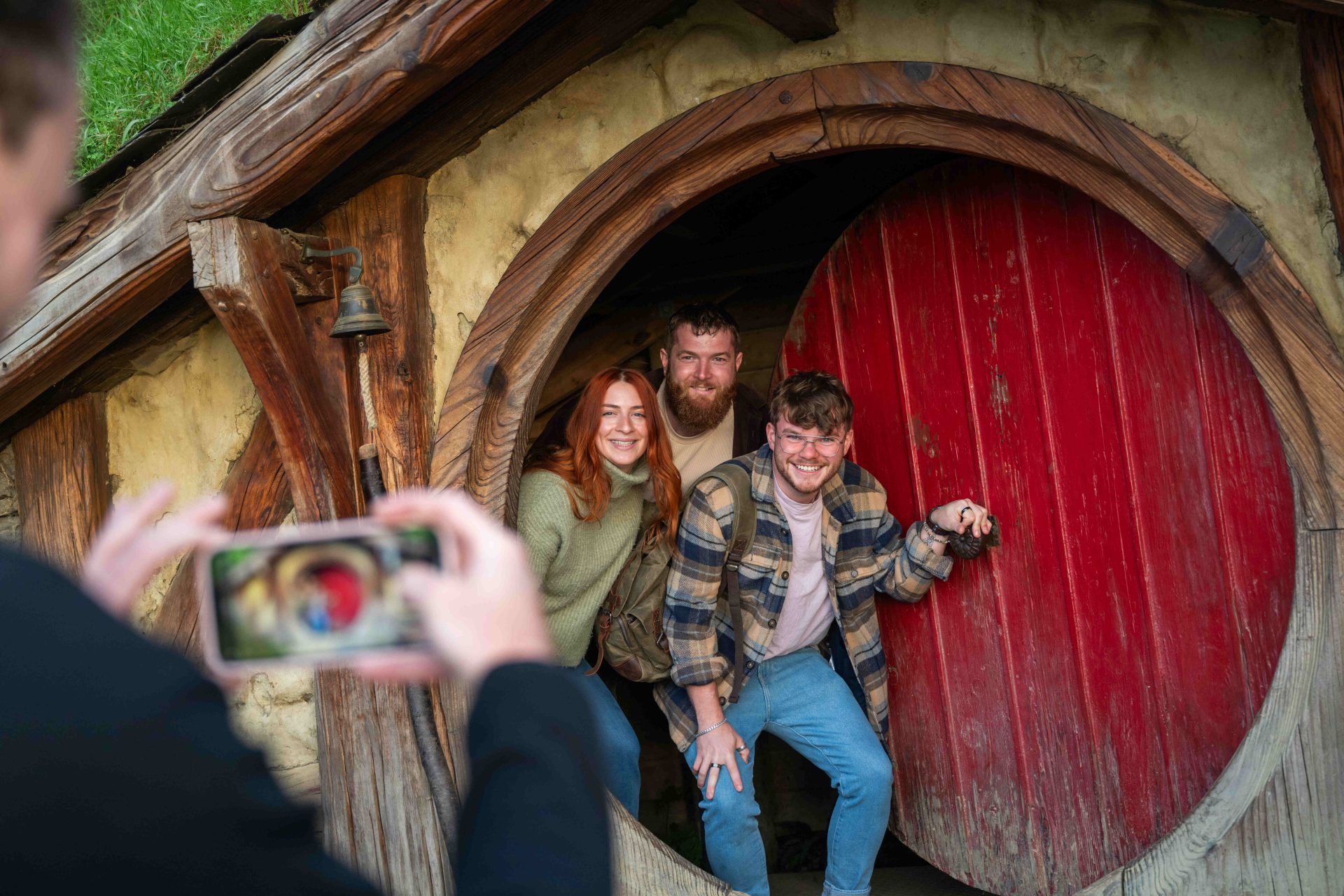
Location
The Hobbiton Movie Set is located in Matamata, in the Waikato region of New Zealand’s North Island. The exact address is 501 Buckland Road, Matamata. The picturesque farmland used for the set is situated about a two-hour drive south of Auckland and a 45-minute drive east of Hamilton. This location was chosen by director Peter Jackson and his team for its rolling green hills and tranquil setting, which perfectly matched the description of the Shire in J.R.R. Tolkien’s “The Lord of the Rings” and “The Hobbit” books. The site has been preserved as a tourist attraction, allowing visitors to experience the magic of Middle-earth firsthand.
Experience
The experience at the Hobbiton Movie Set is a magical journey into the world of J.R.R. Tolkien’s Middle-earth, meticulously brought to life for fans of “The Lord of the Rings” and “The Hobbit” film trilogies. Here’s what you can expect during a visit:
- Guided Tours: All visits to Hobbiton are guided tours that provide rich insights into the making of the films and the history of the set. Knowledgeable guides share behind-the-scenes stories, film trivia, and details about the set’s construction and preservation.
- Picturesque Landscapes: The tour begins with a scenic drive through the lush farmland of the Waikato region. As you arrive at Hobbiton, you’ll be greeted by the iconic, rolling green hills dotted with Hobbit holes.
- Exploring the Shire: Visitors get to walk around the meticulously maintained movie set, exploring famous locations such as Bag End, the Party Tree, and the Green Dragon Inn. The Hobbit holes, with their colorful doors and charming gardens, are perfect for photos.
- Green Dragon Inn: The tour includes a visit to the Green Dragon Inn, where guests can enjoy a complimentary beverage. Choices include the specially brewed Southfarthing ale, cider, or ginger beer, adding an authentic touch to the experience.
- Special Tours and Events: Hobbiton offers various special tours, such as evening banquets, where visitors can enjoy a hearty meal in the Green Dragon Inn, illuminated by lantern light. There are also private tours and special event bookings available.
- Gift Shop: The Shire’s Rest Café and the Hobbiton Gift Shop offer a range of souvenirs, from exclusive merchandise to themed memorabilia, allowing visitors to take a piece of Middle-earth home with them.
- Photo Opportunities: The set is a photographer’s paradise, with numerous spots perfect for capturing the essence of the Shire. Visitors are encouraged to take plenty of photos to remember their journey.
- Farm Experience: The surrounding farmland adds to the rural charm of the visit, showcasing New Zealand’s natural beauty. Occasionally, you might see sheep grazing, further immersing you in the idyllic setting.
Overall, a visit to the Hobbiton Movie Set is a must for Tolkien fans and those who appreciate cinematic history. It offers a unique, immersive experience that brings the beloved stories of Middle-earth to life.
Creation
The creation of the Hobbiton Movie Set is a fascinating story of how a picturesque corner of New Zealand was transformed into the iconic Shire from J.R.R. Tolkien’s “The Lord of the Rings” and “The Hobbit” trilogies. Here’s a detailed look at the process:
Initial Selection
- Location Scouting: In 1998, director Peter Jackson and his team conducted an extensive search across New Zealand to find the perfect location for Hobbiton. They sought a site that resembled Tolkien’s description of the Shire in “The Lord of the Rings.”
- Choosing Matamata: They discovered the Alexander Farm, a 1,250-acre sheep and cattle farm near Matamata in the Waikato region. The rolling hills and lush greenery perfectly matched the Shire’s idyllic landscape described in the books.
Construction for "The Lord of the Rings"
- Negotiation and Preparation: After securing permission from the Alexander family, construction began in March 1999. The New Zealand Army was brought in to assist with the initial earthworks, including building a 1.5-kilometer road into the site.
- Building the Set: Over a period of nine months, a team of designers, builders, and landscapers worked to create the Hobbiton set. They built 39 Hobbit holes, the Mill, the Green Dragon Inn, and the Party Tree. The construction was done using temporary materials, as the plan was to dismantle the set after filming.
- Attention to Detail: Great care was taken to ensure the set looked authentic. This included planting gardens, growing vegetables, and aging the set with moss and lichen. The attention to detail was so meticulous that fruit trees were handpicked to look like apple and plum trees, as described in the books.
Rebuilding for "The Hobbit"
- Permanent Set: After the success of “The Lord of the Rings” films and the growing interest from fans wanting to visit the set, Peter Jackson decided to rebuild Hobbiton permanently for “The Hobbit” trilogy.
- Reconstruction: In 2009, work began to rebuild the set using permanent materials. The team rebuilt the existing Hobbit holes and added more, bringing the total to 44. The Green Dragon Inn, the Mill, and the double-arched bridge were constructed using more durable materials.
- Further Enhancements: The permanent set included additional landscaping, more intricate detailing, and a more robust infrastructure to accommodate tourists. The gardens were replanted, and paths were laid out to guide visitors through the Shire.
Opening to the Public
- Tourist Attraction: The permanent Hobbiton Movie Set was officially opened to the public in 2012. It quickly became one of New Zealand’s most popular tourist destinations.
- Guided Tours: The site offers guided tours that take visitors through the Shire, providing insights into the making of the films, behind-the-scenes stories, and opportunities to explore the Hobbit holes, the Green Dragon Inn, and other iconic locations.
Preservation and Maintenance
- Ongoing Care: The set is meticulously maintained to preserve its appearance. Gardens are tended, and buildings are kept in excellent condition to ensure the magic of Hobbiton remains intact for visitors.
- Sustainable Practices: Efforts are made to use sustainable practices in maintaining the set, including the use of organic gardening methods and careful water management.
The creation of the Hobbiton Movie Set is a testament to the dedication and vision of Peter Jackson and his team, transforming a picturesque farm into a beloved corner of Middle-earth that continues to enchant visitors from around the world.
Lord of the rings filming locations in NZ
New Zealand is renowned for its stunning landscapes, which served as the backdrop for many iconic scenes in Peter Jackson’s “The Lord of the Rings” trilogy. Here are some of the most famous filming locations across the country:
North Island
- Hobbiton (Matamata)
- Description: The picturesque Alexander Farm near Matamata was transformed into the Shire, home of the Hobbits.
- Key Scenes: All scenes set in Hobbiton, including Bag End and the Party Tree.
- Mount Ngauruhoe (Mount Doom)
- Location: Tongariro National Park
- Description: This active volcano was used as the model for Mount Doom.
- Key Scenes: Frodo and Sam’s journey to destroy the One Ring.
- Kaitoke Regional Park (Rivendell)
- Location: Near Wellington
- Description: This lush forest area served as the home of the Elves.
- Key Scenes: Scenes set in Rivendell, where the Fellowship is formed.
- Putangirua Pinnacles (Paths of the Dead)
- Location: Wairarapa
- Description: These unique rock formations provided the eerie setting for the Paths of the Dead.
- Key Scenes: Aragorn, Legolas, and Gimli’s journey through the Paths of the Dead.
- Wellington (Various Locations)
- Key Scenes: Mount Victoria (the hobbits hiding from the Black Riders), and other scenes filmed around the city.
South Island
- Fiordland National Park (Fangorn Forest)
- Location: Southland
- Description: This dense forest area represented Fangorn Forest.
- Key Scenes: Scenes with Treebeard and the Ents.
- Kawarau Gorge (The Pillars of the Kings)
- Location: Near Queenstown
- Description: This gorge was digitally enhanced to show the giant statues.
- Key Scenes: The Fellowship paddling past the Pillars of the Kings.
- Glenorchy (Isengard)
- Location: Near Queenstown
- Description: The area around Glenorchy was used to represent Isengard.
- Key Scenes: Saruman’s stronghold and the surrounding areas.
- Twizel (Pelennor Fields)
- Location: Mackenzie Country
- Description: These expansive fields were the site of the epic Battle of the Pelennor Fields.
- Key Scenes: The climactic battle in “The Return of the King.”
- Mount Sunday (Edoras)
- Location: Canterbury
- Description: A remote hill on Mount Sunday was transformed into Edoras, the capital of Rohan.
- Key Scenes: The Golden Hall of Meduseld and other scenes in Rohan.
- Lothlórien (Fiordland)
- Location: Near Te Anau
- Description: Fiordland’s forests and rivers provided the setting for the elven realm of Lothlórien.
- Key Scenes: Galadriel’s home and the Fellowship’s time there.
- Kepler Mire (Dead Marshes)
- Location: Fiordland
- Description: This wetland area was used to depict the Dead Marshes.
- Key Scenes: Frodo, Sam, and Gollum’s journey through the Dead Marshes.
- Lake Pukaki (Lake-town)
- Location: Mackenzie Country
- Description: The stunning turquoise waters of Lake Pukaki served as a backdrop for Lake-town.
- Key Scenes: Scenes involving Lake-town in “The Hobbit” series.
These locations, among others, have become popular tourist attractions, drawing fans from around the world to experience the magic of Middle-earth firsthand. Auckland & Beyond Tours can help visitors explore these breathtaking sites.
Tours
Choose from standard guided tours, private tours, or evening banquets for a deeper experience. Auckland & Beyond Tours is an authorized transport and tour provider for the Hobbiton Movie Set.
Iconic Locations:
- Bag End: Bilbo and Frodo’s home.
- The Green Dragon Inn: A pub with special ales.
- The Party Tree: A film celebration spot with scenic views.
Special Events:
Enjoy themed festivals, seasonal celebrations, and evening banquets.
Photography Tips
- Waitomo: Use a camera with good low-light capability and a tripod for stable shots. Make sure to check if photography is allowed on the tour you are booking as not all caves allow photography.
- Hobbiton: Early morning or late afternoon light is best for capturing vibrant details. Auckland & Beyond Tours can provide tips on the best times to visit for photography.
Local Cuisine and Dining
- Hobbiton: The Green Dragon Inn offers hearty meals like beef and ale pies.
- Waitomo: Local eateries serve fresh, local dishes. Try the Waitomo Homestead for a meal before or after caving.
Accommodation Options
- Waitomo: Options range from budget hostels to airbnbs.
- Near Hobbiton: Stay in Matamata with various choices from bed and breakfasts to motels.
Cultural Experiences
- Waitomo: Learn about Maori culture through storytelling and traditional performances.
- Hobbiton: Participate in themed events and interact with guides in character costumes. Auckland & Beyond Tours can enhance these cultural experiences with specialized local knowledge.
Shopping for Souvenirs
- Hobbiton: The Shire Store sells film memorabilia and themed items.
- Waitomo: Look for glowworm-themed crafts and Maori art in local shops.
Travel Tips
- Booking: Reserve tours and accommodations in advance, especially during peak seasons. Auckland & Beyond Tours can assist with planning and bookings.
- What to Wear: Comfortable walking shoes are essential. Check the weather forecast for appropriate clothing.
Safety Tips
- Waitomo: Follow all tour guidelines for a safe caving experience.
- Hobbiton: Stick to designated paths and listen to guide instructions. Use sunscreen and stay hydrated.
Conclusion
Waitomo and Hobbiton offer a blend of natural wonders and cinematic magic. Whether exploring glowworm caves or stepping into the Shire, these destinations promise unforgettable experiences. Plan your visit, embrace the myths, and enjoy the marvels of New Zealand with the help of Auckland & Beyond Tours. Book a combo tour to Waitomo and Hobbiton with us and enjoy the magic of the shire and our caves.
FAQs
How do I get to Waitomo and Hobbiton?
Both are reachable by car from Auckland or Rotorua. Guided tours are also available.
What are the main attractions in Waitomo?
The Waitomo Glowworm Caves, Aranui Cave, and Ruakuri Cave.
What can I expect on a Hobbiton tour?
Visits to Bag End, The Green Dragon Inn, and The Party Tree, with insights into the film set. Auckland & Beyond Tours can offer additional special experiences.
Are there adventure activities in Waitomo?
Yes, including black water rafting, abseiling, and zip-lining.
What special events are held in Hobbiton?
Film-themed festivals, evening banquets, and seasonal celebrations.
Where can I buy souvenirs in Waitomo and Hobbiton?
The Shire Store in Hobbiton and local shops in Waitomo for glowworm-themed crafts and Maori art.
Can I go inside Hobbiton and Waitomo privately?
Yes, Auckland & Beyond Tours can arrange exclusive guided tours inside the Hobbiton Movie Set and Waitomo Glow Worm Caves.
Is Hobbiton only accessible by car?
Auckland & Beyond Tours can also arrange for helicopter transfers.
Is the Hobbiton Movie Set in Matamata the only filming location in NZ for Lord of the rings?
No, there is many filming locations all around the North & south Island of New Zealand. Contact Auckland & Beyond Tours to arrange a fully guided experience around New Zealand.
Can I spend the night in a Hobbit Hole?
On the 1st of December 2023, the Hobbiton Movie Set launched a new experience called venture beyond the door on Bagshot Row. While this allows visitors to enter a home of a typical Hobbit, they do not allow overnight stays.


